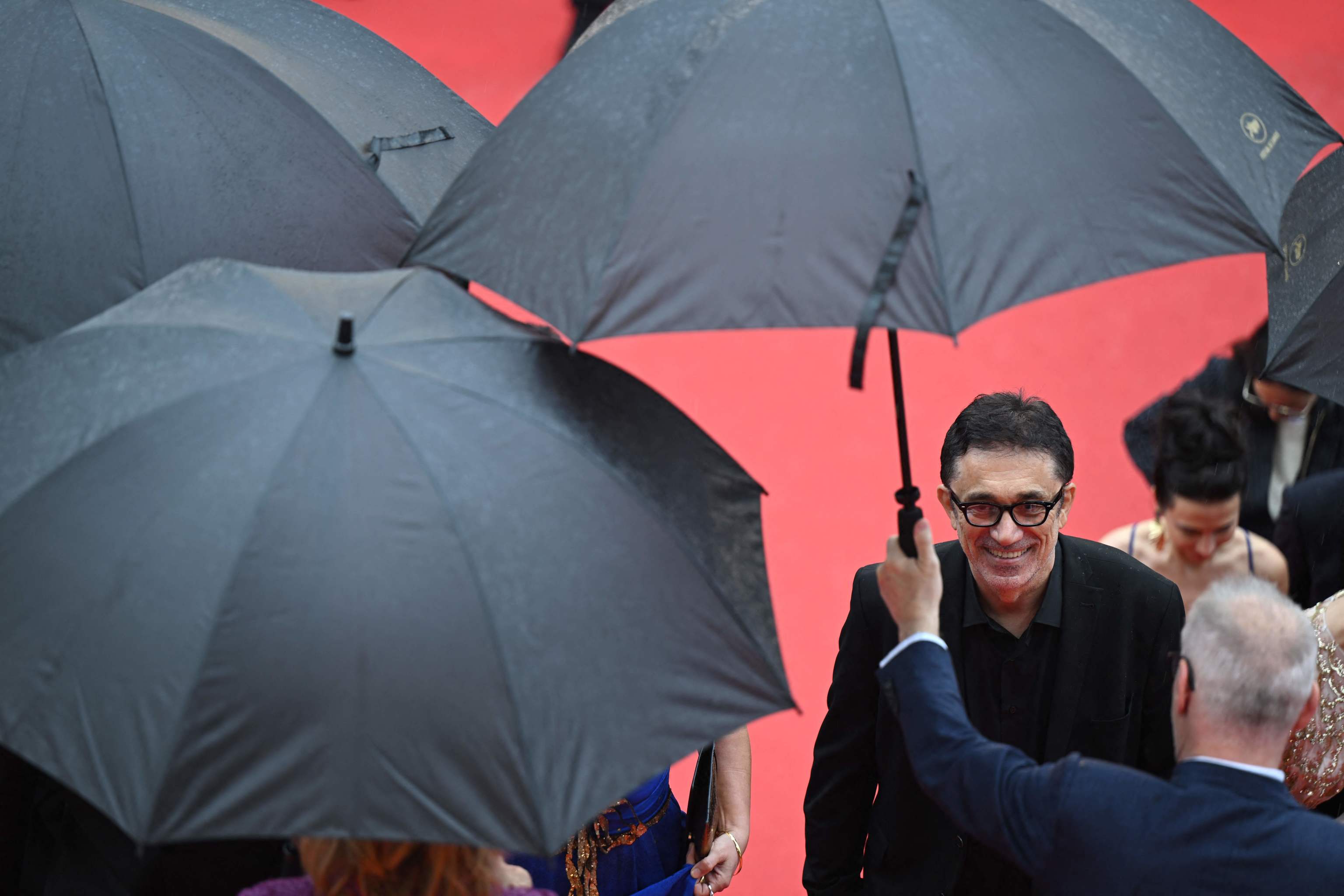- Review Indiana Jones and the Dial of Fate: An of Nostalgia with Several Problems
- Official section 'Monster': brilliant Koreeda against, for and in spite of the family
- Official section 'Black flies': Sean Penn transformed into parody of himself
Nuri Bilge Ceylan and Jonathan Glazer. Two different creeds, two ways of looking would seem to be opposed and, nevertheless, both are united by a strange vocation not so much for what is but for what is seen. The phrase attributed to the great creator of round phrases went something like this: "What you see in a movie is more important than what you say. But what you see is often what isn't." The speaker was, in fact, Godard and, in his own way, with that apt reference to the distance between seeing and being, he offered his particular definition of what time has called out of field. We travel not to see but not to see, said St. John of the Cross. Well, that's it.
Turkish Palme d'Or director Nuri Bilge Ceylan presented a monumental 'About dry grasses'. What is told is the (on paper) inconsequential story of a schoolteacher in the much lost Anatolian region. The protagonist wishes to return to Istanbul, but his transfer does not arrive. And while he waits, loneliness is taking its toll on each of his convictions as a man until he fills everything with a huge emptiness. It seems that the desolate landscape of a very well worked defeat is shown and, in reality, what is seen is not there. The abyss is this.
The case of Jonathan Glazer is much more graphic, but just as tremendous. On the novel by Martin Amis from which the film takes the title and the desolation, 'The zone of interest', the placid, almost idyllic life of those responsible for the Austwitz extermination camp (attentive to the sublime work of the actress Sandra Huller) is narrated. Right next to the most perfect of horrors, the ideal of a life without a single fold. Again, what you really see is missing. And what is there ends up being infinitely more repulsive, foul and brutal than the dignity of the devastation that is seen. Off-field is everything.
In the case of Bilge Ceylan, the director repeats the narrative scheme of Winter sleep, the film with which he triumphed right here in 2014. Again, a teacher; again, isolation; always Anatolia, and the destruction of the masculine condition (call it that) as an argument and even destiny. The filmmaker limits himself to reconstructing the descent into the most vile of hells of a naked cult man before his most intimate mediocrity. He flirts with one of his teenage students, lies and annihilates the only friend who respects him, and even humiliates (while humiliating himself) a classmate who accepts, yes, her status as a teacher in Anatolia.
El director Nuri Bilge Ceylan.ANTONIN THUILLIERAFP
The character moves across the screen like an emulation of the obnoxious Humbert Humbert from Lolita. And as such he runs after each of his puerile desires unable to understand that everything he describes as intimate, sacred or precious is nothing more than an idealized representation of his pettiness, his manias and his clumsiness. There is a moment when the director literally pulls his character out of the film. He opens a door, abandons fiction and gets lost in the network of cables and spotlights that make up a shoot. It is a hallucinated, strange and masterful moment that sums up in the same measure the precipice on which the unheroic protagonist of About dry grasses walks that offers the exact size of the enormous talent of its director. In that outburst of genius, everything he sees is, in a radical sense, what is not. Without a doubt, a greater work. And very sad.
Glazer, on the other hand, composes, frame after frame of admirable luminosity and precision, the most accurate representation of nothingness. His strategy is to describe every contour of the day-to-day life of the Nazi family that runs (let's say) hell itself. They celebrate parties, bathe in the pool, tidy up the garden, walk, love each other, feed the dog with affection ... And in the background, in the background, the crematorium ovens spit their own black message into the sky, which, in reality, is no different from what is on the screen. It's just the same. Just sharpen your eyes. And the ear (masterful sound design)
Here, too, the director of the dazzling anthropophagous fantasy Under the skin designs a scene in which the reality of the story we are told is lost. Suddenly, the camera walks through the empty corridors of what is now Austwitz turned into a museum. The metaphor is simple: the geometric neatness of a horror theme park looks too much like horror itself. It is not about insisting on the banality of horror, but on its simplicity, its everyday life and (hurrying and although it hurts) its cruelest beauty. What is, again, is not what you see. And what you see is an invitation to tear out our eyes.
- cinema
- Films
- Cannes Film Festival
According to the criteria of The Trust Project
Learn more

